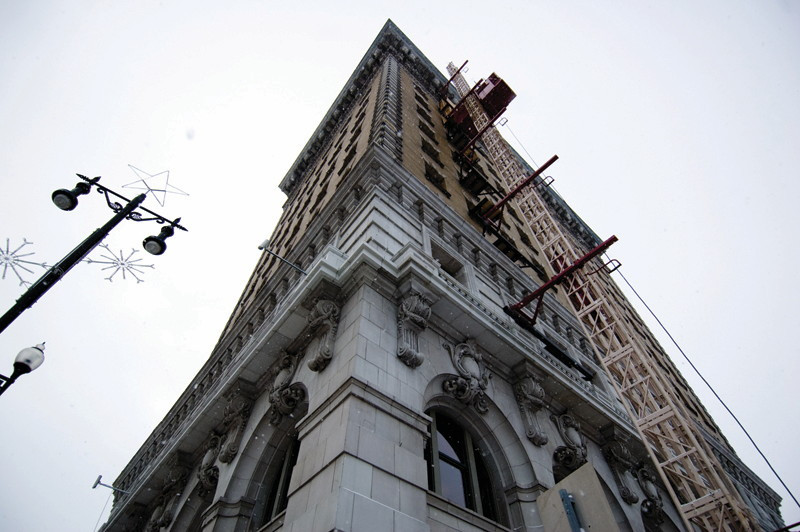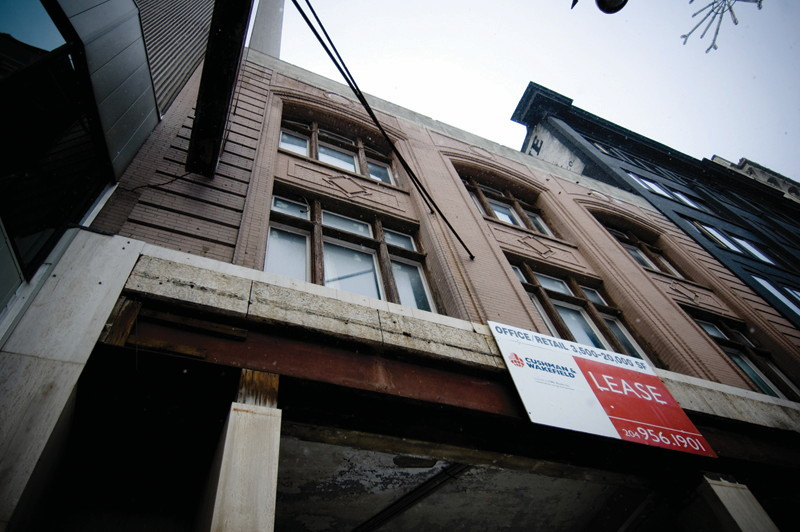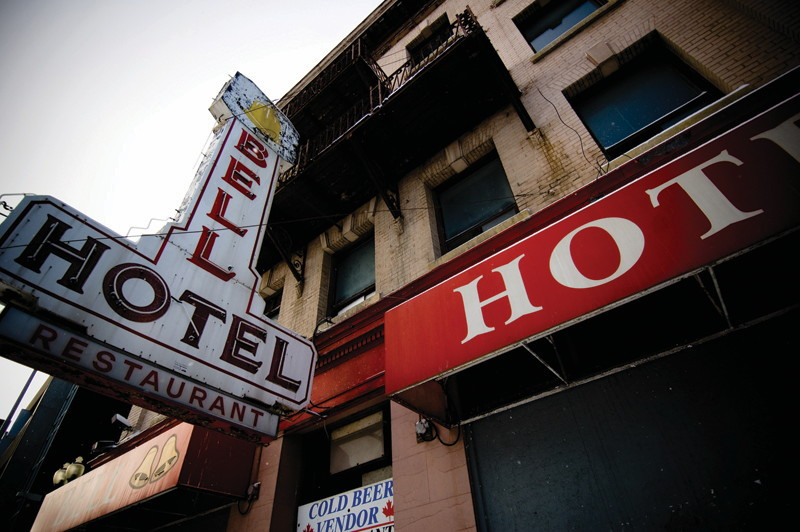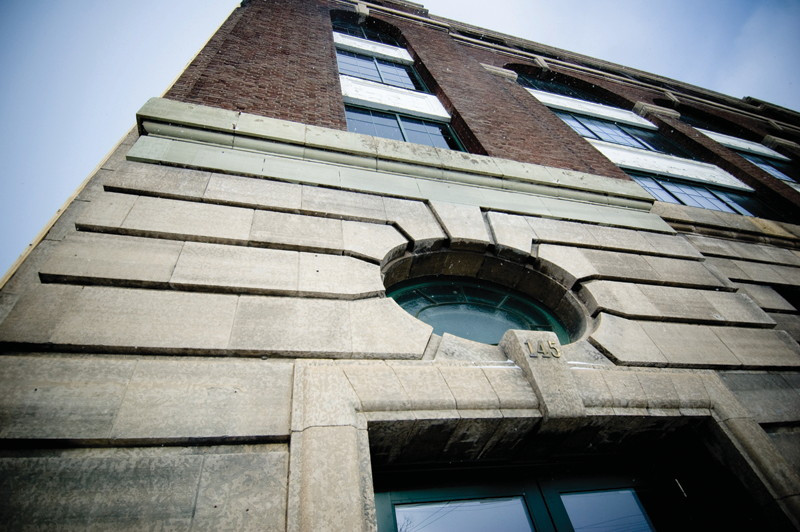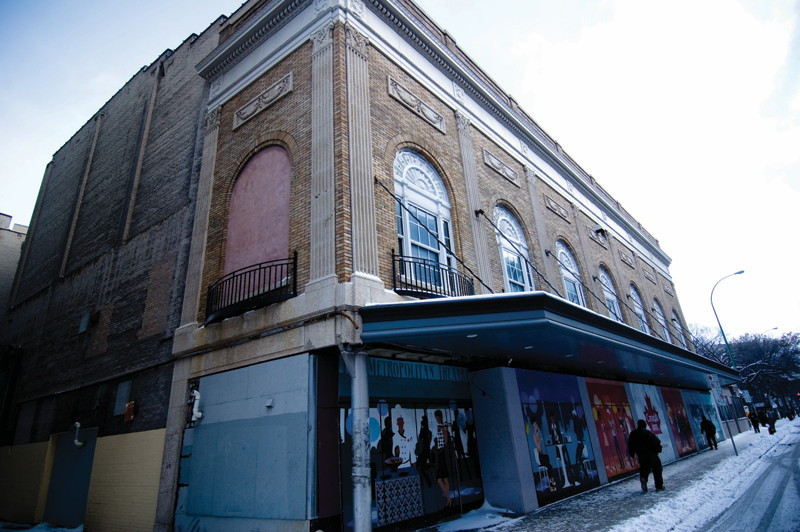Building on the past to create the future
Red River College navigates the fine balancing act that is restoring Winnipeg’s historic Union Bank Tower
Over 100 years old, the tower was one of the first skyscrapers in Western Canada, built in 1903 by two New York architecture firms for a mere $420,000. When it opened in November 1904, it became an example of the opulence of Winnipeg’s early 20th century architecture and a standard by which many other buildings were measured.
For many years, the Union Bank of Canada occupied the building’s first four floors, while the remaining six floors became office space for doctors, lawyers and financial agents. The most recent tenant, the Royal Bank, left the building in 1992 when they moved to their James Avenue and Main Street location.
It has been a victim of time ever since.
Renovation and Restoration
Over the years, a wide variety of ideas were proposed for the Union Bank Tower.
“This beast has sat empty for 18 years and, you know, many more winters it wouldn’t have been in shape to do anything with,” says Dudley Thompson, the principal architect on the Union Bank Tower project. “We had tried on three or four occasions before this to look at other uses for it and nothing really worked.”
Nothing, it seems, until Red River College came along with bold new plans for its hospitality and tourism programs and student housing. The Paterson GlobalFoods Institute, which was proposed back in October 2008, is slated to open in September of 2011.
“There were condos that were swung at this building, a boutique hotel, apartments, city offices, a consulting office,” adds Ted Maciurzynski, director of design, planning and construction at Red River College. “There’s a number of things that people tried but there wasn’t the viability that seemed to make us wisely or not so wisely think we could make it work with this.”
The main floor – with its marble floors, high ceilings, and grand columns – will house the student-staffed restaurant, which will move from the Notre Dame campus, and will be one of three street-level restaurants in the new complex.
The main floor will also contain labs and multi-purpose spaces, while the second and third floors will house classrooms, offices and labs. Floors four through 10 will contain student residences, 100 in all. The building will be built to Gold LEED standards for sustainability and energy efficiency.
On the inside, underneath a century of dust and mountains of rubble, you can see the beginnings of change: the marble and hardwood floors are being excavated, the basement has been gutted, the walls in the upper floors are being insulated and the windows have all been taken out and are being replaced.
If you look at the former site of the Leland Hotel, just west of the Union Bank Tower (the hotel burned down in 1999 and the site has been vacant since), you can see concrete has already been poured and new piles have been installed. The balcony that runs along the Main and William sides of the building has been recast and reinforced with metal.
“The hard part is the beginning, especially in the older buildings, to know what’s here,” says Thompson. “There are some surprises – some good surprises, but mostly not so good surprises.”
Thompson is referring to unpleasant surprises like the fact the Annex is built on a foundation built in the 1870s.
Thompson explained that restoring a heritage building is not the easiest task, and brings up further issues that would not arise if he were building from scratch.
Issues specific to the Union Bank Tower include the fact that the building is a Grade I national historic site, which means any work on the outside of the building must be approved by Parks Canada.
Builders also have to be aware of the urban context they are building in.
Not only do they have to think about closing roads, dealing with the proper authorities, organizing cranes and a slew of other problems, they must think about how the building will fit in with the particular area.
In this case, the architects are dealing with City Hall and the nearby Old Market Square.
Perhaps the most visible concern to most would be trying to integrate new additions into the existing heritage building.
“Because this is such a precious heritage building, we’ve tried to make sure that our new building isn’t flashier than the old one. We’re not trying to be an extrovert,” Thompson explains. “The new building is kind of nice, but it’s in the background. But at the same time, we’re not trying to make it look exactly like this building, we’re trying to give it its own contemporary character.”
This can be quite a tricky point when it comes to heritage buildings and the Exchange District in particular. Being a national historic site, and having a certain idea of what it is, makes it hard for architects to build onto existing buildings.
Recently, architecture firm 5468796 wanted to add a rooftop condo onto a building on Bannatyne Avenue. They were shut out by city council because the design proved to be “too radical” for the Exchange.
“It’s balancing all those things, and dealing with all the authorities that have jurisdiction, and (having) something that the owners even like,” Thompson says. “I think this building probably has all the complexities you could ever find in an architectural commission.”
But while heritage buildings are difficult to build, they are also quite thrilling.
“Quite often you get up in the morning and you don’t know what you’re going to encounter. There’s an excitement with that even for guys like this who have been doing it for a long time,” Maciurzynski says. “We’ve said from the beginning that the project doesn’t really have any negatives. It’s got urban renewal, it’s got housing downtown, it’s got student housing downtown, it’s got a post-secondary element, it’s got restaurants, it’s got 24-hour activity, it’s got young student activity, so it’s just got a bunch of positives.
“That’s the way we’ve been reminding ourselves this is the right thing to do,” he says.
The project has a $27 million price tag, of which $22.5 million was devoted to the construction contract. The rest of the money is tied up in consulting fees, furniture and the incredible amount of equipment needed for the project.
“ There’s pressure from the development community sometimes, there’s pressure when people want parking lots and different things. It’s up to the political leaders to make decisions that are for the long-term future of our city. I believe the long-term value of our city increases when we preserve heritage, wherever possible.
Coun. Jenny Gerbasi, chair, Historical Buildings Committee
The Politics of Change
The Union Bank Tower and its Annex were added to the list of Winnipeg’s historic buildings in July 1995, just one of the classifications given to our city’s historic properties.
“There’s really no different levels of protection (for a historic building), it’s either designated or it’s not,” says city councillor Jenny Gerbasi, who chairs the Historical Buildings Committee.
Buildings are either on the Buildings Conservation List or on the Historical Buildings Inventory. The Buildings Conservation List consists of buildings that have been declared historic by the City of Winnipeg, on the recommendation of the Historical Buildings Committee. They are graded on a level of I, II or III, and nearly 200 items have been added to the list since its creation in 1977.
The Historical Buildings Inventory on the other hand is a list of structures that have not yet been researched or evaluated but might have historical significance.
The Historical Buildings Committee is a group of experts in architecture, and representatives of the different levels of government, which essentially advise city council of heritage issues, research, assess and recommend structures for designation, and oversee changes made to buildings outside the Exchange District.
Changes to any of these buildings must be approved by the city, and a building on either list can’t be demolished until council removes its designation.
Also involved in the process are local advocacy groups like Heritage Winnipeg, whose function is to protect and promote built heritage.
All parties seem to agree that when it comes to heritage, the city wins some and loses some.
“Part of what we need ... in the city is more awareness of the value of heritage – that comes from these discussions,” says Gerbasi. “There’s pressure from the development community sometimes, there’s pressure when people want parking lots and different things. It’s up to the political leaders to make decisions that are for the long-term future of our city. I believe the long-term value of our city increases when we preserve heritage, wherever possible.”
Cindy Tugwell, Heritage Winnipeg’s executive director, agrees.
“Every heritage building that is preserved has a story to tell, a part of our history: who owned it, what they did to contribute,” she says. “You learn about so many things with each individual building. The legacy they will leave is an ongoing history on perpetuity.”
“Smart heritage decisions really start from the grassroots, (from) understanding your community’s needs,” Tugwell continues. “Smart heritage comes from understanding all the issues, because you’re only going to protect heritage buildings if you have a viable use for them and there’s no way around that. You can lobby to save a building, but it has to have a use, it has to be part of the fabric of the city.”
Everyone also seems to agree that there is no reason the heritage buildings of today can’t last another hundred years.
“I think we look to other places like Europe where these buildings are protected, and they are invested, and they are maintained. I think they can last forever if we take care of them,” says Tugwell. “You are talking about some of the world’s best built buildings, and there is no reason these buildings can’t last into many, many, many lifetimes.”
The same applies to the Union Bank Tower.
“It’s been here 100 years already, I don’t see why another 100 would hurt,” says Thompson.
“We’ve had much less well-built buildings which have lasted longer,” adds Maciurzynski.
Published in Volume 65, Number 13 of The Uniter (November 25, 2010)

